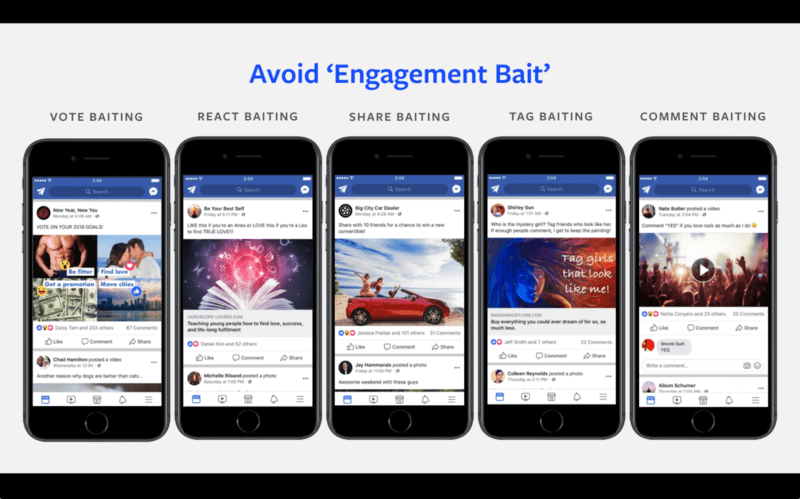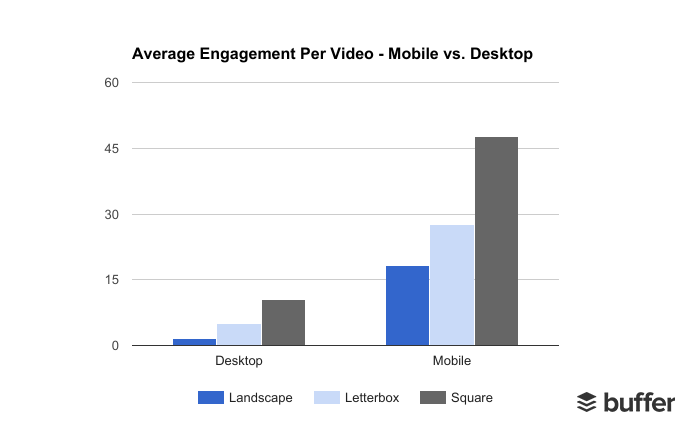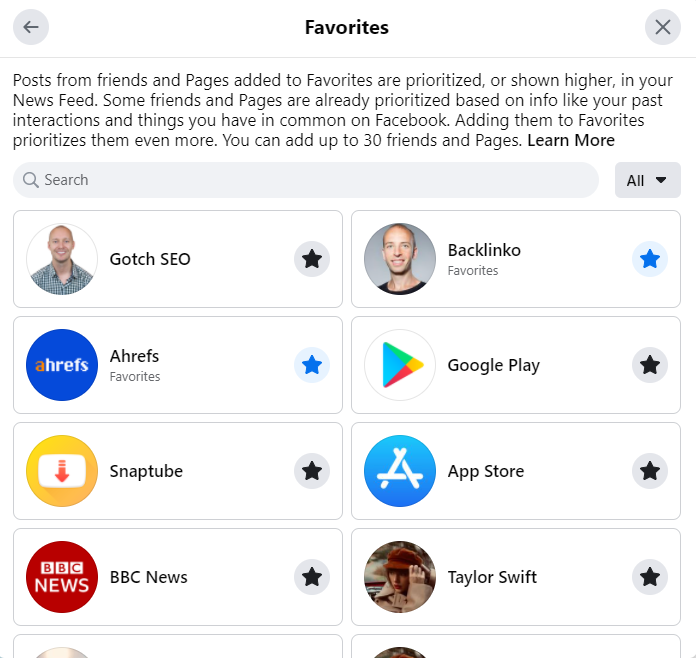How Facebook Algorithm Works + 8 Tips to Get Insane Reach!
Let’s face it: organic reach on Facebook is at an all-time low. As of the end of 2020, organic reach is still on the decline. The average reach for an organic Facebook post is down to 5.2%. (For the record, at the end of 2019 it was 5.5%, and the year before that it was 7.7%). Why?
The Facebook algorithm.
If you’re not keeping up with changes to the Facebook algorithm, you’re going to have a much harder time getting your posts seen by people.
In this article, we’re going to share a quick overview of the Facebook algorithm update history and understand how Facebook algorithm works. More importantly, we’ll learn how to “use” the algorithm to make our post get reach!
Contents
- Facebook Algorithm Update History
- ? 2009 – News Feed Prioritizes Popular Posts
- ? 2011 – News Feed Prioritizes Relevance
- ? 2015 – Introduce the “See First” Feature
- ? 2016 – “Times Spent” Became a Ranking Signal
- ? 2017 – News Feed to Weigh “Reactions” More Than “Likes”
- ? 2018 – Facebook to Emphasize Meaningful Interactions
- ? 2019 – Quality & Original Videos to Receive More Distribution
- ? 2020 – Original Reporting in News Stories to Get Priority
- ? 2021- Ranking Signals Are Personalized to the User
- How The Facebook Algorithm Works in 2021?
- 8 Tips for Working with The Facebook Algorithm
- Tip #1. Avoid These Mistakes
- Tip #2. Post When Your Fans Are Online
- Tips #3. Post Less: One or Two Posts Per Day Maximum
- Tips #4. Post Facebook Stories
- Tips #5. Make Video a Cornerstone of Your Content Strategy
- Tips #6. Reply to Your Audience
- Tips #7. Get On the Favorites List
- Tip #8. Invest in Paid Promotion On Facebook
- What You Have Done when Facing the New Facebook Algorithm?
Facebook Algorithm Update History
The Facebook algorithm is continuously evolving to meet the needs of the platform and its users. This is great, but it also means that you should keep up with changes of Facebook algorithm.
In the below timeline, we mark the major changes both marketers and businesses need to be aware of.
? 2009 – News Feed Prioritizes Popular Posts
Facebook algorithm was born when Facebook premiered a sorting order where the posts with the most Likes got bumped to the top of the feed. Previously, it ranked posts chronologically.
? 2011 – News Feed Prioritizes Relevance
The popularity contest is somewhat replaced with a News Feed that prioritizes the most relevant content for every user. It’s a mixed-bag of high-engagement content and posts from family and friends.
Facebook themselves stated at the time: “When you visit Facebook, you should see the things you’re most interested in, like status updates from your family and closest friends.”
? 2015 – Introduce the “See First” Feature
In 2015, Facebook gave users the ability to nudge the algorithm directly: the “See First” feature let users indicate that they’d like a Page’s posts to be prioritized in their feed.
? 2016 – “Times Spent” Became a Ranking Signal
In 2016, Facebook added a “time spent” ranking signal. In other words, it started measuring a post’s value based on the amount of time users spent with it, even if they didn’t like or share it.
Live video was also prioritized, as it was earning 3x more watch time than regular video.
? 2017 – News Feed to Weigh “Reactions” More Than “Likes”
Facebook experiments with prioritizing video content based on completion rate, weighing reactions more than likes, de-ranking spam and click-bait, and giving a higher ranking to web pages that load faster. All of these changes stick around.
? 2018 – Facebook to Emphasize Meaningful Interactions
Facebook instructs its algorithm to prioritize meaningful social interactions and content from trusted and local news sources.
Posts from friends, family and Facebook groups were given new weight, over and above organic content from organizations and businesses.
? 2019 – Quality & Original Videos to Receive More Distribution
Updates in 2019 included prioritizing “high-quality, original video” that keeps viewers watching longer than 1 minute, and especially video that holds attention longer than 3 minutes.
Facebook also started bumping up posts and content from “close friends”: i.e., those that people engage with the most, whether that’s by tagging each other in photos or DMing in Messenger.
? 2020 – Original Reporting in News Stories to Get Priority
Facebook has long received criticism for how news-related stories are elevated in the News Feed, oftentimes favoring hyper-partisan sources. This update seeks to give original reporting a boost in the News Feed algorithm while also demoting news stories that have no clearly defined author or editorial staff.
? 2021- Ranking Signals Are Personalized to the User
In January 2021, Facebook released new details about its algorithm. Facebook says that it uses thousands of ranking signals. An interesting insight into ranking factors is that they are weighted differently from one user to the next.
Also, users can use the new Feed Filter Bar to determine what shows up on their news feed. Users can switch between three options:
- Algorithmically ranked content
- Most recent posts
- Updates from their favorite friends and pages they follow
How The Facebook Algorithm Works in 2021?
The algorithm we see today is a smarter, more evolved version of every algorithm before it. And it’s only going to keep getting smarter.
However, over the years, Facebook has consistently mentioned the same four ranking signals as the most important when it comes to News feeds rankings.
- Relationship: Is the post from a person, business, news source or public figure that the user often engages with? (i.e., messages, tags, engages with, follows, etc.)
- Content type: What type of media is in the post, and which type of media does the user interact with most? (i.e., video, photo, link, etc.)
- Popularity: How are people who have already seen the post reacting to it? (Especially your friends). Are they sharing it, commenting on it, ignoring it, smashing that angry face?
- Recency: How new is the post? Newer posts are placed higher.
8 Tips for Working with The Facebook Algorithm
The key to working with the algorithm is understanding it.
Here’s the gist: if you promote meaningful reactions, focus on your audience, and avoid engagement bait, you’ll be doing your best to build organic reach.
Below are some tips to do just that:
Tip #1. Avoid These Mistakes
Watch out for: The Facebook algorithm is not too keen on …
- Clickbait (posts that ask for clicks or entice users to click with sensational or false information)
- Like-baiting (posts that ask for likes, comments, and shares)
- Posts with abnormal engagement patterns (a like-baiting signal)
- Posts with Spammy links (for example, links with a clickbait title that lead to a page full of ads)
- Repeated content
- Text-only posts
- Intensely promotional page content prompting readers to make a purchase
- Posts that reuse text from existing ads

Tip #2. Post When Your Fans Are Online
We used to believe that there’s a universal best time to post on Facebook. However, the truth is that every brand has its own perfect time(s) to post. That’s because the best time to post depends on several factors that are specific to each brand: What industry are you in? Where is your audience based? When do your followers use Facebook?
A scientific way to find your best time to post is to look at your own data.
In your Facebook Page Insights, under the Post tab, you get data about when your Facebook Page fans are online for each day of the week.
Tips #3. Post Less: One or Two Posts Per Day Maximum
According to an experiment from Buffer, posting less grew their reach and engagement by three times.
If we post only one post every day,
- It forces us to only share the best of the best content because we literally have limited space.
- It allows the Facebook algorithm to focus on delivering one piece of content (vs. multiple) to our audience.
I encourage you to experiment with only posting once or twice per day on Facebook.
Tips #4. Post Facebook Stories
Facebook Stories could be the best opportunity for brands to grow their engagement, build brand awareness, and strengthen their relationship with their audience.
And a lot of it has to do with where Facebook Stories are located.
Unlike regular Facebook posts, which appear on people’s feeds, Facebook Stories are displayed right at the top of the Facebook app. This is prime real estate for businesses trying to catch their audience’s attention.
Tips #5. Make Video a Cornerstone of Your Content Strategy
Video content drives higher engagement and interactions from users compared to any other type of content on Facebook. Moreover, the video ranking update in 2019 further indicated that native video is more and more important on Facebook.
Pro Tips:
- According to Buffer, square videos outperformed landscape videos in terms of average engagement, views, and reach, especially on mobile.

- Videos uploaded onto Facebook natively perform way better than links to YouTube or similar video platforms.
Tips #6. Reply to Your Audience
While your branded content will never truly be able to compete with anyone’s friend’s new cat, it is still important to build connection with your audience. That’s because the algorithm prioritizes posts from Pages that a user has interacted with in the past.
An easy way to try is to reply all comments. This would make your users feel heard and be more willing to comment on your Facebook posts in the future.
Tips #7. Get On the Favorites List
Facebook gives every user 30 slots for their favorite Facebook pages as another way to let users control what content they see on their news feed. Those thirty lucky ducks get an automatic free pass from the algorithm.
As a brand, you want your page in those 30 slots. Chances are, your audience members don’t know about this feature.
Informing your audience of this option is one way to become a Fave, but this falls a little too close to engagement-baiting.

Tip #8. Invest in Paid Promotion On Facebook
Last, but not least, I’d love to address how important Facebook boosted posts have been in increasing reach and engagement on our Page.
Boosting posts takes content that’s already performing well and amplifies it on a huge scale. As that implies, the key is to focus on boosting great content, not necessarily posts that aren’t doing well and “forcing” them with advertising dollars.
What You Have Done when Facing the New Facebook Algorithm?
Like it or not, the ever-changing Facebook algorithm requires you to rethink your marketing strategies to win more followers and Likes.
What are your Facebook’s best practices that outsmart Facebook algorithm? Tell us in the comments below.
